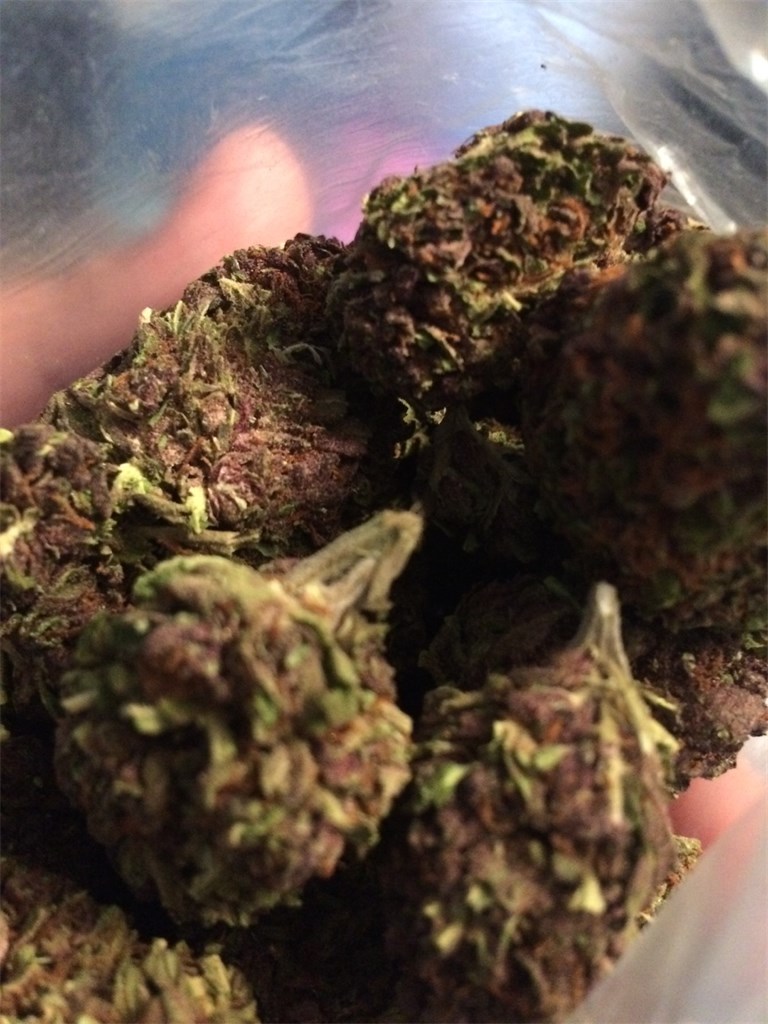

You'll also find anthocyanin in a number of fruits, vegetables, flowers, and other plants, where they create some of the beautiful blues, reds, purples, and pinks we see in nature. The magic behind the hue in a purple strain comes from the presence of anthocyanin, a flavonoid that has known antioxidant effects. While most cannabis lovers are very well acquainted with the concept of cannabinoids, and many have come to seek out specific terpenes, purple strains open up the conversation to a newer chemical component in cannabis that is starting to get more love: flavonoids.

For many - if not most - strains, the name will call attention to the fact that it's a purple weed strain, and they are easily identified in a jar on any dispensary's shelf. While they are often indica-dominant strains, selective breeding has made purple leaves and/or buds a fixed trait in a number of popular strains that cover the hybrid and sativa divide. Today, breeding has offered up a number of strains that will purple out regardless of temperature. They were most often associated with indica varietals and presented when the plants were exposed to cool temperatures, either artificially in an indoor grow or outdoors when summer turned to fall. Originally, purple strains weren't nearly as common. However, this evenly balanced hybrid is not just another average indica strain, and contrary to the above numbers, it can hit pretty hard.Purple weed strains have long intrigued cannabis lovers, and who could blame them? They offer a spectrum of visual stimulation, from deep and brooding violet to lighter shades that pirouette on the lilac end of the spectrum. When it comes to THC percentage, Purple Urkle falls into the “moderately potent” category, with Tetrahydrocannabinol levels between 18% - 21%. Now, let’s take a peek at some of the strain’s most distinct features. On the other hand, when you look at numerous publications on this Indica, you will notice plenty of people referring to the Mendocino Purps strain as the main parent, one that brought the “purple craze” to California. Purple Urkle Weed Strain first appeared in the late 1980s, originally bred at the Cannabis Buyers’ Club of West Hollywood, according to Michael Backes’ “Cannabis Pharmacy.” Since the precise genetics of Purple Urkle are known only within a small network of cultivators, some strain hunters suggest that it is a phenotype of Granddaddy Purple. What we DO know about Purple Urkle’s lineage is that it originated in the Emerald Triangle region of California, whose breeders have a reputation of being tight-lipped about their strain hybrids and genetics.

Purple Urkle purple nugs with orange hairs, photo: Purple Urkle’s OriginsĪs with many cannabis hybrids out there, the exact genetics of Purple Urkle Weed Strain are loudly debated by weed aficionados.

Still, it looks like more people are interested in the effects of this mysterious indica rather than its history.īut before we elaborate on its palette of recreational and medical benefits, let’s shed some light on Purple Urkle’s genetics first. Not to mention that some varieties of this unique breed are a far cry from what the “Purple” name would suggest. Being one of the most famous Indica strains around, its origins are still fogged by a mystery.
PURPLE URKLE WEED FULL
Purple Urkle Weed Strain is a cannabis strain full of contradictions. South Georgia & South Sandwich Islands (USD$).


 0 kommentar(er)
0 kommentar(er)
